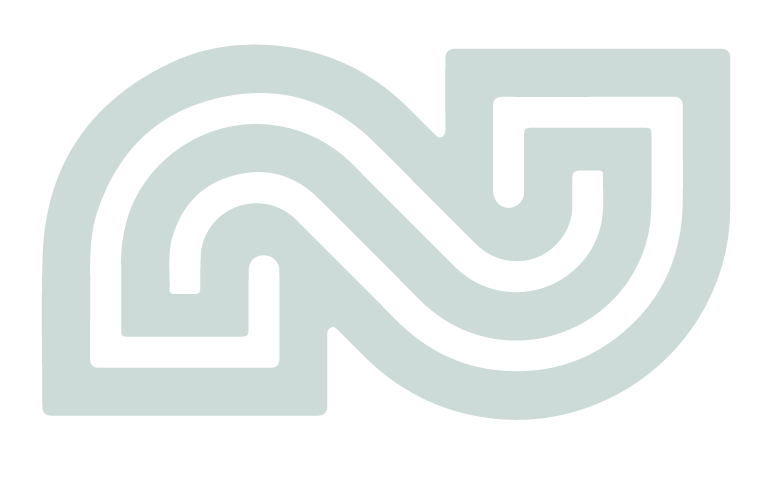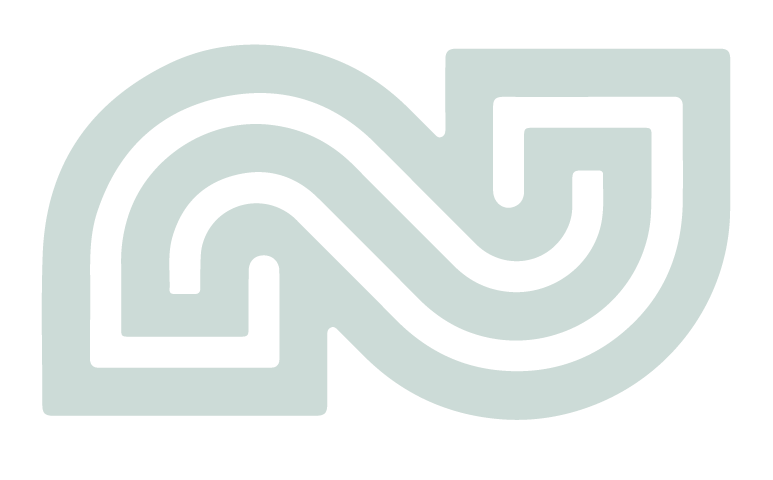
Hello, creative minds and aspiring designers! If you're stepping into the vibrant world of design, your portfolio is more than just a collection of your works; it's the storyteller of your creative journey and the bridge to your dream career. Think of it as your personal gallery, a curated exhibition of your skills, style, vision, and brand. But where do you start, and how do you ensure that your portfolio captures the essence of your unique talent?
In this guide on how to craft a winning portfolio, we'll embark on a journey to build not just a portfolio, but a compelling narrative of your design prowess. Whether you're a recent graduate or a designer looking to refresh your existing portfolio, this guide is your companion in crafting a portfolio that resonates with your audience, be it potential employers, clients, or collaborators.
From selecting your standout projects to weaving a story that connects them, from the nuances of presentation to the art of making a lasting impression, we'll cover all the essentials. So, let's roll up our sleeves and dive into the world of portfolios, where every page, every image, and every design choice you make is a step toward the career you've always envisioned.
1. Understanding the Purpose of Your Portfolio
Why Your Portfolio Matters
In the realm of design, your portfolio is much more than a simple showcase of past projects. It's a dynamic tool that communicates your skills, style, and potential to the world. Whether you're aiming for a dream job, seeking freelance opportunities, or looking to make a mark in the design community, your portfolio is your visual voice.
Defining Your Audience
Before you start compiling your work, it's crucial to understand who you're creating your portfolio for. Is it for a potential employer in a specific industry? Is it to attract freelance clients? Or perhaps it's to gain recognition in the design community? Identifying your audience helps tailor your portfolio to resonate with the right people.
Showcasing Your Skills and Style
Your portfolio should be a reflection of your best work and your unique approach to design. It's not just about what you've done, but how you've done it. Highlight projects that showcase your range of skills and the design principles you value. Remember, your portfolio is a testament to your growth and capabilities as a designer.
Creating a Lasting Impression
In a competitive field like design, first impressions are crucial. Your portfolio is often the first point of contact with potential employers or clients. It should be engaging, easy to navigate, and leave a memorable impression. Think of it as your personal brand - a well-crafted portfolio can set you apart in a crowded industry.
Building a strong portfolio is my #1 design career tip for designers looking to land their dream job.
Action Item: Define Your Audience and Goals
Take a moment to reflect on your primary audience and the goals for your portfolio. Write down who you are targeting (e.g., agencies, startups, corporate clients) and what you want to achieve (e.g., job opportunities, freelance projects, industry recognition). This clarity will be your guiding star as you select and present your work in the sections to come.
2. Selecting Your Best Work
Quality Over Quantity
The key to a great portfolio is not the number of projects you include, but their quality and relevance. Each piece should contribute to the overall narrative you want to convey. Choose work that showcases your technical skills and demonstrates your problem-solving abilities, creativity, and growth as a designer.
Diversity in Projects
A diverse portfolio reflects your versatility. Include a range of projects that showcase different skills and styles. This could mean mixing logo designs with web layouts, or packaging designs with brand identities. However, ensure that this diversity still aligns with your overall design philosophy and the expectations of your target audience.
Highlighting Your Role
Be clear about your role in each project. This transparency helps viewers understand your contributions and skills. If it was a team project, specify your part in it. This honesty not only builds trust but also accurately represents your experience and expertise.
Personal Projects Matter
Don’t underestimate the power of personal projects. They can be just as impactful as client work, sometimes even more so. Personal projects show your initiative, passion, and ability to self-direct. They can be a great way to showcase your creativity and explore styles or ideas that might not come up in client work.
The Story Behind the Work
Each project in your portfolio should tell a story. Include brief descriptions that cover the project's background, your creative process, challenges faced, and solutions provided. This narrative approach helps viewers connect with your work on a deeper level.
Action Item: Curate Your Projects
Gather all your projects and start the curation process. For each project, ask yourself: Does this represent my best work? Does it reflect the skills and styles I want to be known for? How did I contribute to this project? Does it tell a story about my design journey? This reflective exercise will help you select the most impactful projects for your portfolio.
3. Presenting Your Work Effectively
Crafting a Cohesive Narrative
Your portfolio should flow like a well-told story, with each project contributing to a cohesive narrative. Arrange your work in a way that demonstrates your evolution as a designer or group projects by theme or skill set. This thoughtful organization makes your portfolio more engaging and makes it easier for viewers to follow your professional journey.
Visual Consistency
Maintain a consistent brand and visual theme throughout your portfolio. This includes using a harmonious color scheme, consistent typography, and a layout that complements your work. Consistency in design elements helps in establishing your personal brand and makes your portfolio more professional and polished.
Detailing Your Creative Process
Go beyond just showcasing the final product. Include sketches, wireframes, or mood boards to illustrate your creative process. This transparency not only adds depth to your work but also demonstrates your problem-solving skills and attention to detail.
Optimizing for Different Formats
Whether your portfolio is digital or physical, ensure it's optimized for its format. For digital portfolios, pay attention to load times, mobile responsiveness, and easy navigation. For physical portfolios, focus on print quality and the tactile experience. Remember, the medium is part of the message.
Using Annotations and Captions
Effective use of annotations and captions can provide context to your work. Briefly explain the objectives, your approach, and the outcomes of each project. This additional information can be invaluable in helping viewers understand the full scope and impact of your work.
Action Item: Organize and Refine Your Presentation
Review your selected projects and start organizing them into a coherent narrative. Consider the flow and how each project relates to the next. Experiment with different layouts and formats to find the best way to present your work. Add annotations and captions where necessary to give context. If possible, get feedback from peers or mentors to refine your presentation further.
4. Incorporating Feedback and Testimonials
The Value of External Perspectives
Feedback and testimonials are not just about accolades; they provide an external perspective on your work. Including these in your portfolio adds depth and credibility, showing potential clients or employers that your work has made a real impact.
Gathering Feedback
Reach out to past clients, colleagues, or instructors who are familiar with your work. Ask them for feedback on specific projects or your skills as a designer. Be open to constructive criticism, as it can provide insights into areas for improvement and growth.
Selecting Testimonials
Choose testimonials that speak to your strengths and the quality of your work. A good testimonial is specific, highlighting particular aspects of your work that impressed the client or collaborator. It’s not just about praising your work; it’s about illustrating your effectiveness as a designer.
Presenting Feedback and Testimonials
Integrate feedback and testimonials strategically within your portfolio. They can be placed alongside the relevant projects or in a dedicated section. Ensure that they are easy to read and don’t overshadow your work. The goal is to complement your projects with real-world endorsements.
Balancing Self-Presentation with External Validation
While it’s important to showcase external validation, your portfolio should primarily focus on your work and skills. Use feedback and testimonials to enhance your presentation, not to dominate it.
Action Item: Collect and Curate Testimonials
Start reaching out to past clients, colleagues, or instructors for testimonials. Collect feedback on your work and select the most relevant and impactful statements. Think about how you can integrate these into your portfolio in a way that complements your projects and reinforces your professional image.
5. Reflecting Personal Growth and Continuous Learning
Emphasizing Personal Development
Your portfolio should not only showcase your professional achievements but also reflect your personal growth and commitment to continuous learning in the field of design. This aspect of your portfolio tells a story of your dedication and evolving expertise.
Showcasing Personal Projects
Include personal projects that demonstrate your initiative and passion for design. These projects can be particularly telling, as they often allow for more creativity and innovation without the constraints of client specifications. They reflect your personal interests and your ability to self-motivate and innovate.
Highlighting Continued Education
If you've taken any courses, attended workshops, or participated in webinars, consider including these experiences. They show your commitment to staying current and continuously improving your skills. Briefly describe what you learned and how it has enhanced your design capabilities.
Adapting to Industry Changes
Show how you've adapted to changes in the design industry, whether it's by learning new software, experimenting with emerging design trends, or adapting to new design methodologies. This adaptability is a key trait that potential employers and clients look for in a designer.
Action Item: Document Your Growth
Reflect on your personal growth and learning journey. Gather evidence of your continuous learning, such as certificates, personal project samples, or notes from workshops. Consider how to incorporate these into your portfolio to showcase not just where you are now, but the path you've taken to get there.
6. Keeping Your Portfolio Updated
The Importance of a Current Portfolio
A portfolio is a living document of your professional journey. Keeping it updated is crucial for reflecting your current skills, latest projects, and evolving design style. An up-to-date portfolio shows that you are active, adaptable, and committed to growth in your field.
Regular Reviews and Updates
Set a regular schedule for reviewing and updating your portfolio. This could be every few months or after the completion of a significant project. Use these reviews as opportunities to remove older work that no longer represents your best abilities and to add new, more relevant projects.
Evolving with Industry Trends
As design trends and technologies evolve, so should your portfolio. Stay informed about current trends and consider how your portfolio can reflect your proficiency with the latest design tools and methods. This demonstrates to potential clients and employers that you are a forward-thinking designer.
Reflecting Personal Growth
Your portfolio should not only showcase your professional work but also your personal growth as a designer. Include personal projects, experiments, or continued learning endeavors that show your passion and dedication to the field.
Showcasing a Range of Skills
As you gain more experience, your range of skills will likely expand. Make sure your portfolio reflects this growth. Showcase a variety of projects that highlight different skills and aspects of your design expertise.
Action Item: Plan Your Portfolio Update
Review your current portfolio and identify areas for improvement. Are there any outdated projects that need to be replaced? Do you have recent work that showcases your current skills and style? Make a list of updates you need to make and set a timeline for these changes. Regularly updating your portfolio ensures it remains an accurate reflection of your professional journey.
7. Leveraging Online Tools and Resources
Maximizing Digital Platforms
In today's digital age, having an online presence is essential. Utilize platforms like Behance, Dribbble, or your personal website to showcase your portfolio. These platforms offer not only a space to present your work but also opportunities to reach a wider audience and connect with the design community.
Optimizing for Online Visibility
Understand the basics of SEO (Search Engine Optimization) to make your online portfolio more discoverable. Use relevant keywords, meta descriptions, and high-quality images. Regularly updating your content also helps in maintaining a strong online presence.
Utilizing Portfolio Websites
Consider using portfolio-specific websites that offer customizable templates. These sites can make the process of building and maintaining an online portfolio easier, especially if you have limited web development skills.
Integrating Social Media
Leverage social media platforms to share your work and direct traffic to your online portfolio. Platforms like Instagram, LinkedIn, and Twitter (X?) can be powerful tools for showcasing your design work and engaging with potential clients or employers.
Action Item: Enhance Your Online Presence
Evaluate your current online presence. Do you have an updated online portfolio? Are you active on relevant social media platforms? Make a plan to either create or update your online portfolio, optimize it for search engines, and integrate your social media activity to increase visibility and engagement.
Conclusion
Creating a winning design portfolio is a journey of showcasing your skills, style, and story. Remember, your portfolio is an ever-evolving showcase of your professional growth. By understanding its purpose, carefully selecting and presenting your work, incorporating feedback, and keeping it updated, you set the stage for new opportunities and career advancements. Embrace the process, and let your portfolio be a reflection of your unique journey in the world of design.
Feel free to reach out or share your experiences in building your portfolio. It's always inspiring to see how different designers bring their stories to life through their portfolios.
Not sure where to start with your portfolio?
I offer a free initial session to discuss your portfolio goals and how I can help! Let’s talk about turning your portfolio into a powerful tool for your career growth.


No Comments.